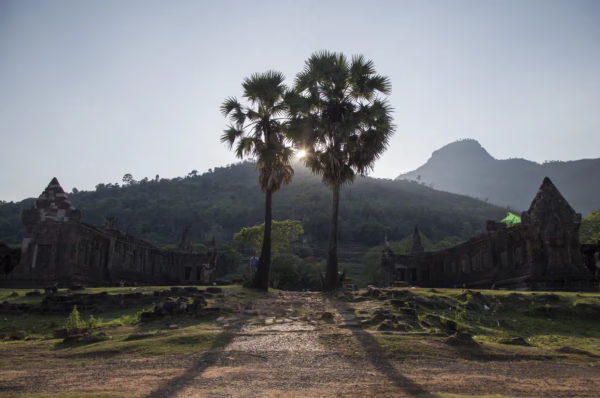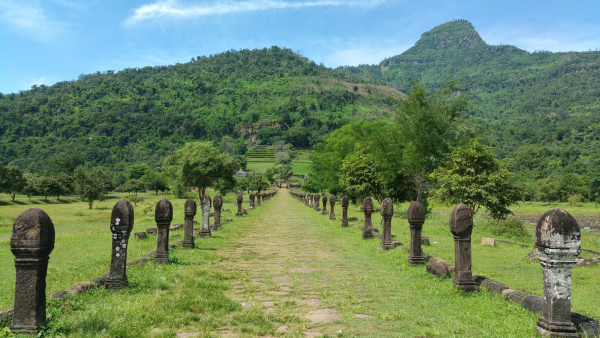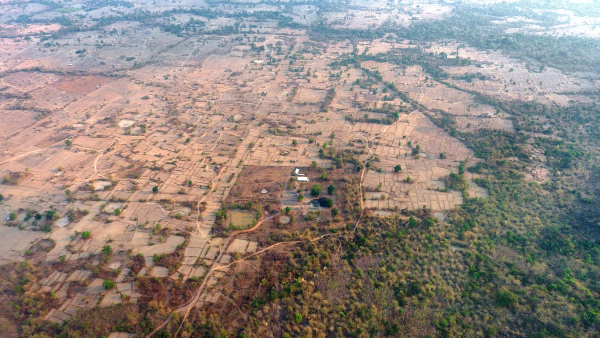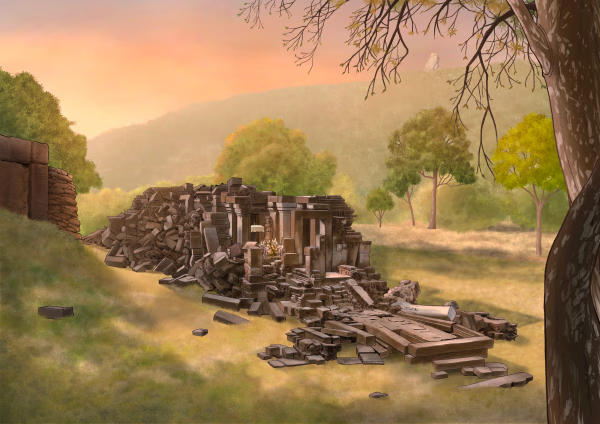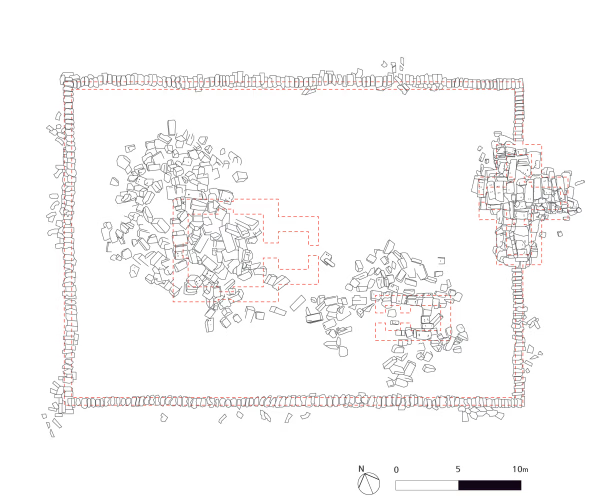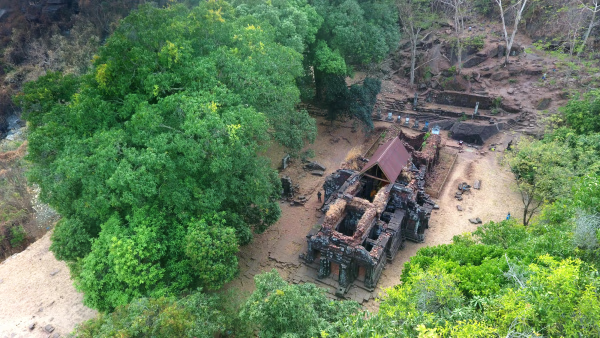
Main Sanctuary
Published 2024.08.16 by 유다연
ອະທິບາຍ
The Vat Phou temple complex consists of a total of six terraces. These terraces are connected by a central walkway and staircases, symbolizing a spiritual journey that gradually ascends from the worldly realm to the realm of the gods.

The main sanctuary was constructed over a long period. It is believed that this temple was first built around the 5th century when King Devanika established the sacred city of Kurukshetra near the Mekong River. Of course, repairs, expansions, and reconstructions were carried out afterward, and most of what is visible today dates back to the Khmer Empire period. Right next to the main sanctuary stands a small pavilion, a common feature in Khmer temples. Around the 13th century, Wat Phou was converted from a Hindu temple dedicated to Shiva into a Buddhist temple, and it continues to serve as a shrine for the local community.
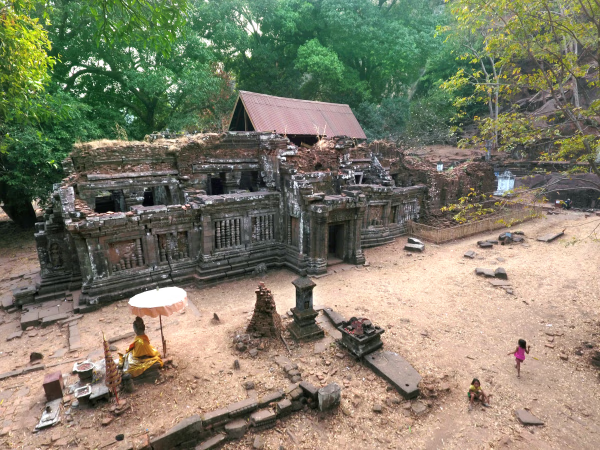
The roof of the building collapsed a long time ago. To continue using it as a Buddhist temple, a modern temporary roof has been installed.
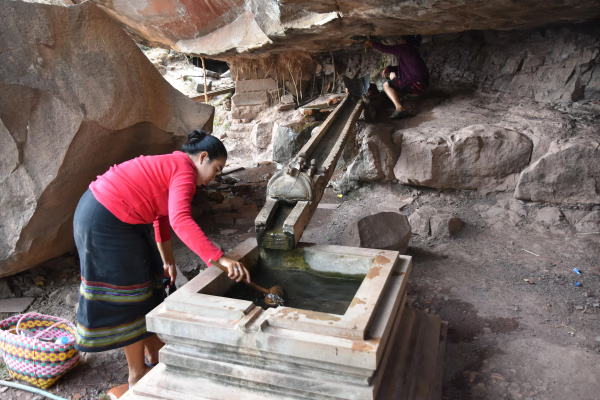
Behind the main sanctuary of the Vat Phou temple complex, there is a sacred spring that has been a significant feature since the temple's construction. This freshwater spring flows directly from the rock cliff, which is one of the reasons why the temple was originally built on this specific location. The spring is considered sacred and has played a crucial role in the religious practices at the site. It was believed that the spring's water was blessed by the gods, particularly by Shiva, to whom the temple was originally dedicated. The spring continues to flow, and it has been a focal point for pilgrims and visitors who see it as a source of spiritual purification
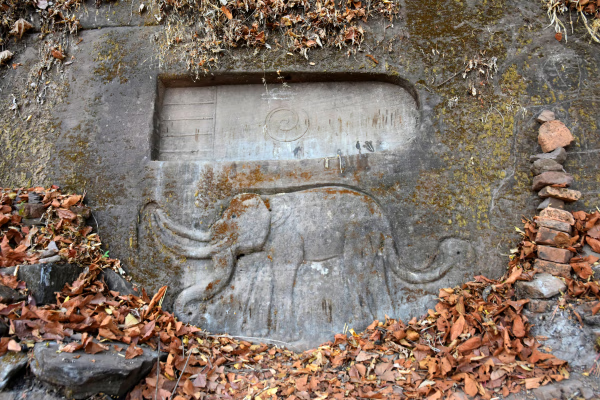
From the sacred spring, a stone staircase leads north to a cliff where there are bas-reliefs of a sacred Buddha footprint and an elephant, which is revered in Buddhism. In the forest to the north of the sixth terrace, there are rocks carved with animals such as elephants, crocodiles, and nagas—animals frequently depicted in Hindu traditions and venerated by the local people as part of their folk beliefs. Nearby, there is a small, square-shaped stone shrine, which is one of the oldest visible structures within the Vat Phou-Champasak site.
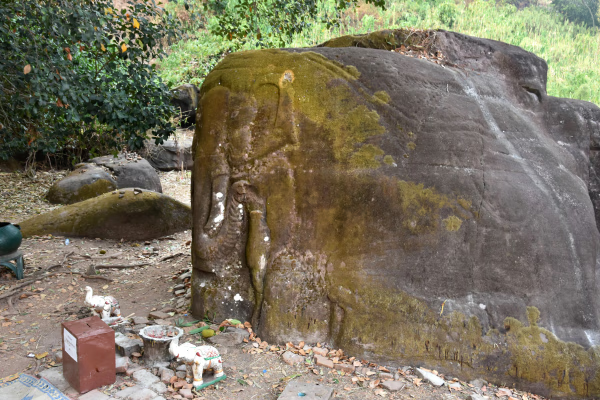
The image shows a rock carving of an elephant at the Vat Phou temple complex in Laos. This rock is part of the "Forest of Animal Rocks," a section of the site where various animals are carved into the natural rocks. The elephant, as seen in the carving, is an important figure in both Hindu and Buddhist traditions, symbolizing strength, wisdom, and spiritual significance. The area around the rock is adorned with small offerings, indicating its continued reverence by visitors and local worshippers. This spot is one of several within the Vat Phou complex where sacred animals are depicted, serving as a testament to the syncretism of Hindu and Buddhist beliefs in the region.
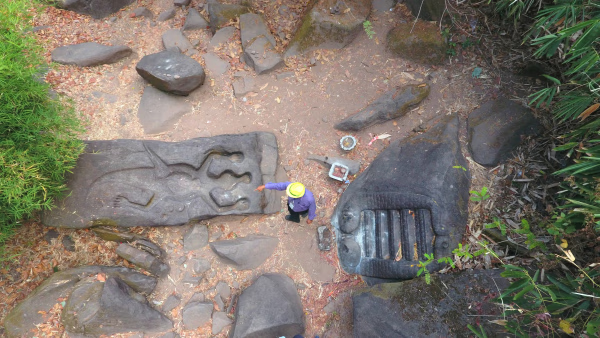
In the center, two large rock carvings are visible. On the left, there is a carving of a crocodile, while on the right, an elephant's footprints are depicted. These carvings hold significant meaning as they represent sacred animals in Hindu and Buddhist traditions.
The offerings placed around the carvings suggest that this place is still revered and possibly visited by pilgrims or local worshippers. The surrounding area is natural and somewhat secluded, indicating that this site emphasizes the connection between nature and spirituality.
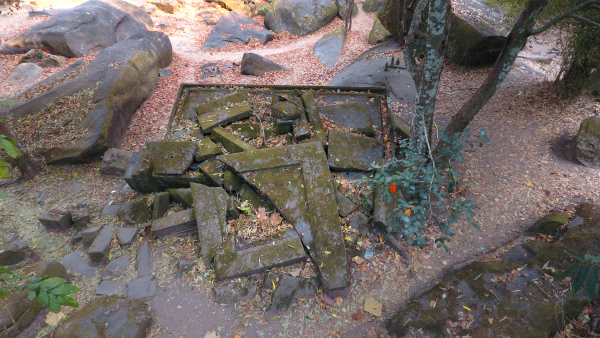
It appears that the image shows the remnants of a collapsed stone structure at the Vat Phou temple complex. The stones are scattered within a rectangular area, which might have once been part of a small shrine or pavilion. The stones are covered with moss and leaves, indicating that this site has been in ruins for a significant period. The surrounding area is natural, with trees and other vegetation, suggesting that this part of the complex is more secluded and possibly less visited. The scene reflects the ancient and weathered nature of the site, which has endured the passage of time.
ບົດທີ
ການນິດສະການທີ່ກ່ຽວຂ້ອງ
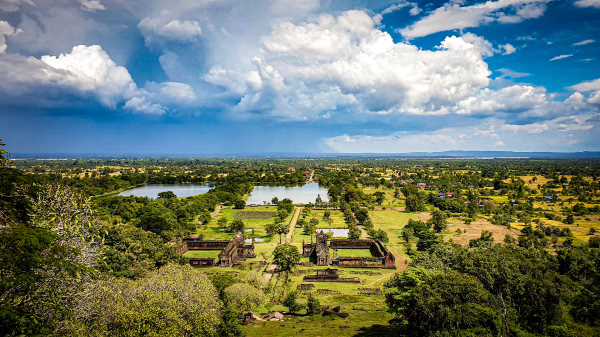
Natural History
Online Exhibition of the Vat Phou Champasak Ruins and the Excavation of Hong Nang Sida
The Vat Phou - Champasak site lies on fertile alluvial plains on the banks of the Mekong River, and its mountainous core is the eastern outlier of the Dângrêk Range, which is home to the Phou Kao Mountains that rise up to an altitude of 1,416 meters.
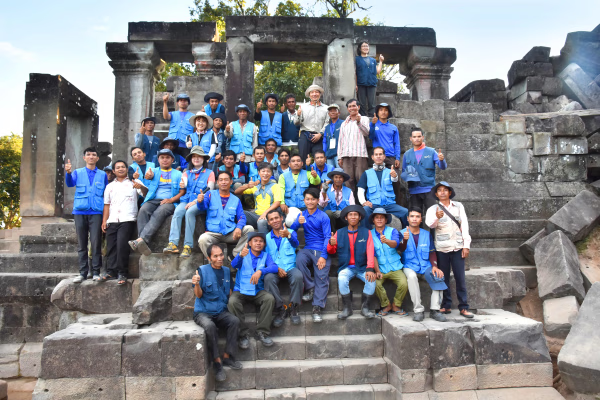
Natural History
Lao-Korea Cooperation Project : Hong Nang Sida Temple
Since 2013, the Cultural Heritage Administration and the Korea Cultural Heritage Foundation have been working on a heritage restoration project at the World Heritage Site “Vat Phou and Associated Ancient Settlements within the Champasak Cultural Landscape” in Lao PDR. The project focuses on restoring the collapsed stone structure called Hong Nang Sida, located in the southern part of the Vat Phou Temple Complex. This site, also known as the “Temple of Princess Sida,” is gradually regaining its original appearance thanks to the ongoing restoration efforts by a Korean research team.
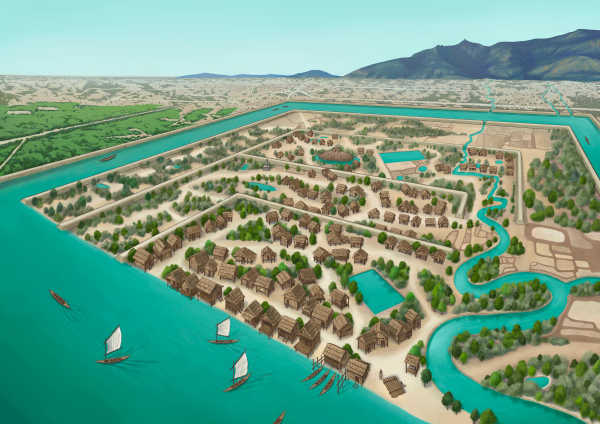
Natural History
Sacred River
The archaeological site of the ancient city is situated on the plains adjacent to the Mekong River. The city was surrounded by two layers of brick and earthen ramparts, with a moat in between. These ramparts measured approximately 2.4 km from north to south and 1.8 km from east to west, with the best-preserved sections standing up to 6 meters high and 14 meters thick. The walls and moats were likely constructed to manage and utilize the waters from the Phou Kao Mountains' tributaries.
